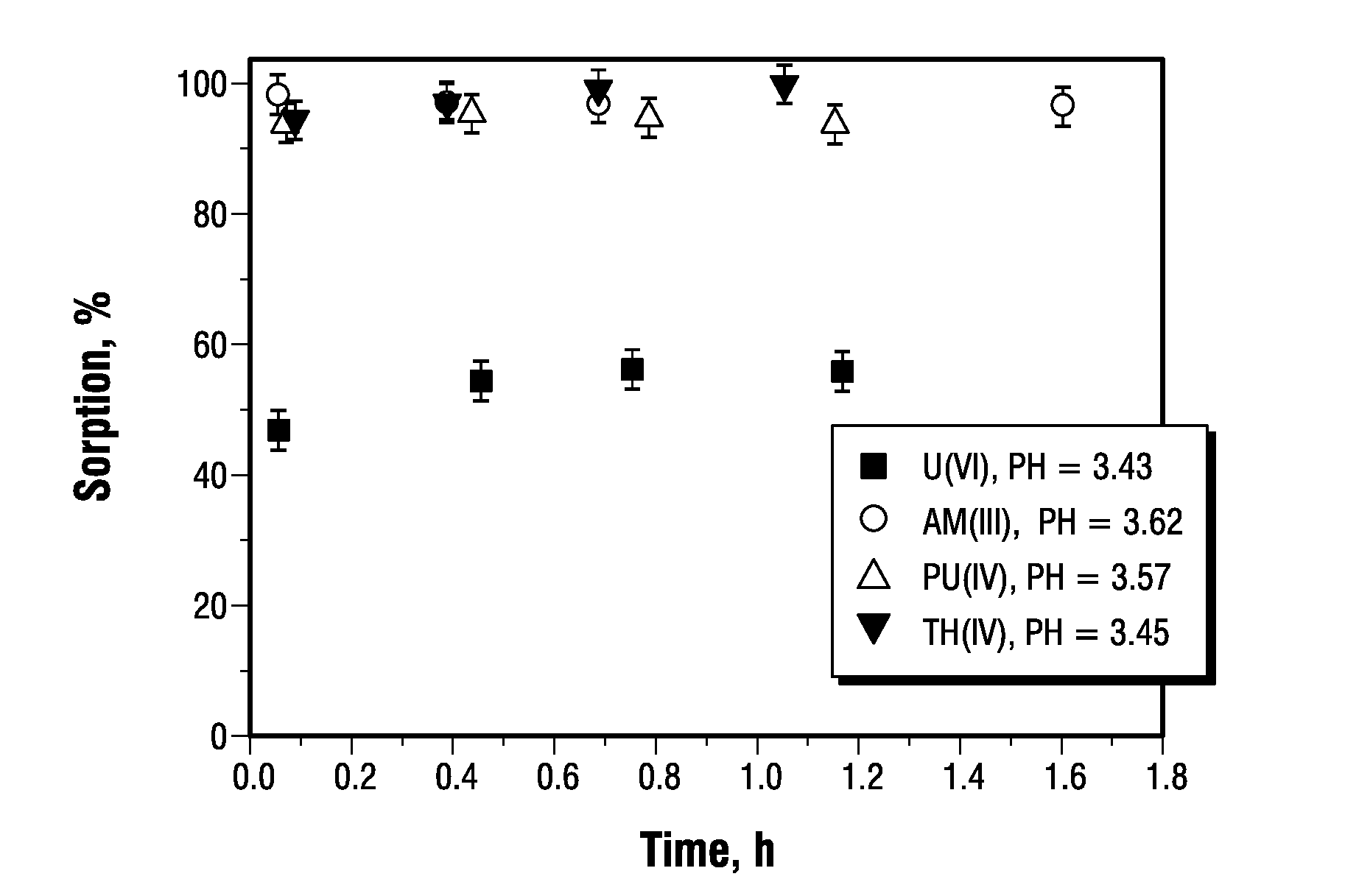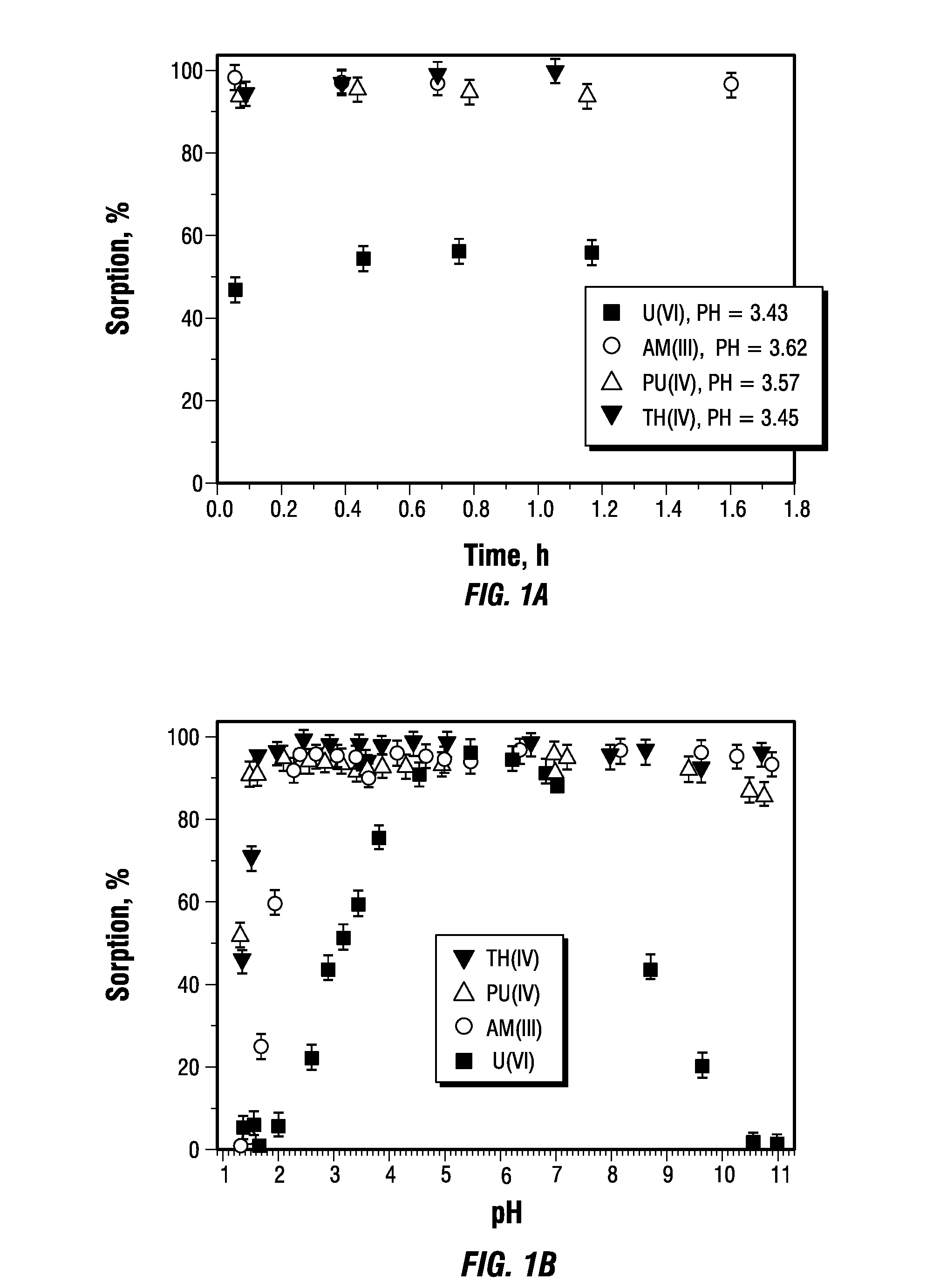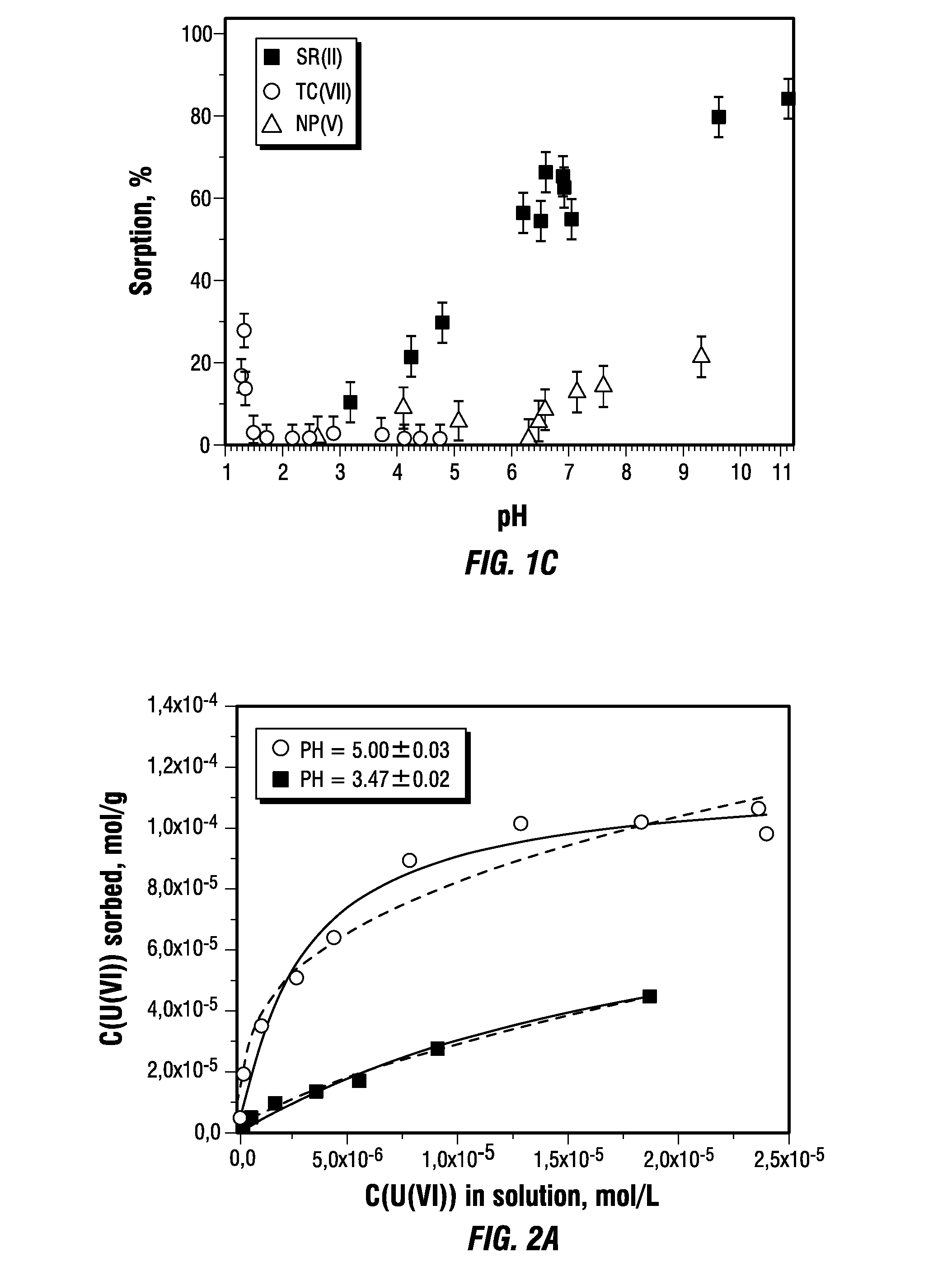Sorption and separation of various materials by graphene oxides
a technology of graphene oxides and various materials, applied in the direction of separation processes, multi-stage water/sewage treatment, other chemical processes, etc., can solve the problems of numerous limitations in efficacy, cost, efficiency, etc., and achieve the effect of effective separation of various radioactive elements
- Summary
- Abstract
- Description
- Claims
- Application Information
AI Technical Summary
Benefits of technology
Problems solved by technology
Method used
Image
Examples
example 1
Kinetics of Radionuclide Removal
[0082]The kinetics of radionuclide removal by graphene oxide are presented in FIG. 1A, indicating that near steady state conditions were achieved within 5 minutes even at very low graphene oxide concentrations (<0.1 g / L by carbon). Without being bound by theory, it is envisioned that the fast sorption kinetics are likely due to graphene oxide's highly accessible surface area and lack of internal surfaces that usually contribute to the slow kinetics of diffusion in cation-sorbent interaction. This fast kinetics are of importance for practical applications of graphene oxide for removal of cationic impurities, including Th(IV), U(VI), Pu(IV) and Am(III).
example 2
Radionuclide Removal as a Function of pH
[0083]FIGS. 1B and 1C show pH sorption edges for Sr(II), Tc(VII), Np(V), Th(IV), U(VI), Pu(IV) and Am(III). All of the radionuclides demonstrate typical S-shaped pH-edges for cations, except for Tc, which exists as the pertechnetate anion, TcO4−. This explains its sorption at low pH when the graphene oxide surface is protonated and positively charged. For Lewis “hard” cations such as the actinides Th(IV), Pu(IV) and Am(III), the sorption is high, even from acidic solutions with pH<2. For these cations, the sorption from neutral pH solutions was nearly quantitative, a result that is indicative of the prospects of its application in remediation of contaminated natural waters.
example 3
Graphene Oxide's Radionuclide Sorption Capacities
[0084]Graphene oxide demonstrates high sorption capacity towards U(VI), Sr(II) and Am(III) cations, as determined from sorption isotherms shown in FIG. 2. Even with a graphene oxide concentration of only 0.038 g / L, the saturation limit is not reached. The values for sorption capacity presented in FIG. 2 are calculated from experimental data using Langmuir formalism and Freundlich formalism. The experimental results are summarized in Table 1.
TABLE 1Parameters for sorption of U(VI), Sr(II) and Am(III) on graphene oxide.Langmuir formalismFreundlich formalismQmax, μmol / gKL, L / μmolR2KF, moln−1 Ln / gnR2U(VI), pH = 3.597 ± 190.046 ± 0.0140.980.004 ± 0.0020.33 ± 0.040.95U(VI), pH = 5116 ± 5 0.035 ± 0.0640.970.078 ± 0.0260.68 ± 0.030.99Sr(II), pH = 6.5272 ± 35 0.026 ± 0.0070.950.034 ± 0.0170.55 ± 0.050.96Am(III), pH = 3.52 ± 17.034 ± 3.1250.970.05 ± 0.030.67 ± 0.050.99
[0085]The above-mentioned results were obtained, despite the fact that the gr...
PUM
| Property | Measurement | Unit |
|---|---|---|
| Sorption coefficient | aaaaa | aaaaa |
| Interaction | aaaaa | aaaaa |
| Radioactivity | aaaaa | aaaaa |
Abstract
Description
Claims
Application Information
 Login to View More
Login to View More - R&D
- Intellectual Property
- Life Sciences
- Materials
- Tech Scout
- Unparalleled Data Quality
- Higher Quality Content
- 60% Fewer Hallucinations
Browse by: Latest US Patents, China's latest patents, Technical Efficacy Thesaurus, Application Domain, Technology Topic, Popular Technical Reports.
© 2025 PatSnap. All rights reserved.Legal|Privacy policy|Modern Slavery Act Transparency Statement|Sitemap|About US| Contact US: help@patsnap.com



